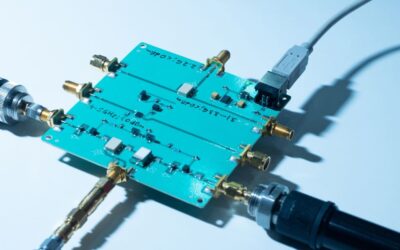How Single Frequency Networks Enhance Broadcast Coverage

Broadcasting, the cornerstone of mass communication, has evolved dramatically over the years. As technology continues to advance, one critical innovation has emerged that significantly improves the reach and quality of broadcast signals: Single Frequency Networks (SFNs). This technology has become a vital tool in ensuring seamless and reliable broadcast coverage, especially in regions where traditional methods struggle. By leveraging SFNs, broadcasters can provide clearer, more consistent signals across large geographic areas, benefiting both urban and rural audiences.
The Basics of Single Frequency Networks
At its core, a Single Frequency Network is a network of transmitters that operate on the same frequency and simultaneously broadcast the same signal. This approach contrasts with the traditional broadcasting method, where different transmitters in a network would operate on separate frequencies. The idea behind SFNs is to create a synchronized system that allows multiple transmitters to work together as a single, cohesive unit.
In an SFN, each transmitter in the network broadcasts the same content on the same frequency. This synchronization is crucial because it eliminates the interference that typically occurs when signals from different transmitters overlap. Instead of competing with each other, the signals from the various transmitters reinforce one another, resulting in a stronger and more reliable broadcast signal.
Benefits of Single Frequency Networks
- Improved Signal Coverage
One of the most significant advantages of SFNs is their ability to improve signal coverage. In a traditional network, signal strength can vary significantly depending on the distance from the transmitter and the geographic terrain. This often leads to areas of weak or no coverage, known as “dead zones.” SFNs address this issue by allowing multiple transmitters to cover the same area, ensuring that the signal remains strong and consistent even in challenging terrains or densely populated urban environments.
- Better Spectrum Efficiency
Spectrum efficiency is another critical benefit of SFNs. The radio frequency spectrum is a limited resource, and broadcasters must use it wisely. By using the same frequency across all transmitters in a network, SFNs make more efficient use of the available spectrum. This efficiency is particularly important in crowded urban areas where the demand for spectrum is high. SFNs allow broadcasters to maximize coverage while minimizing the amount of spectrum required, freeing up valuable bandwidth for other uses.
- Reduced Interference
Interference is a common problem in traditional broadcasting networks, where signals from different transmitters can overlap and cause distortion. This issue is particularly pronounced in border regions where signals from neighboring countries may interfere with domestic broadcasts. SFNs minimize this problem by ensuring that all transmitters in the network are perfectly synchronized, reducing the potential for interference and resulting in a clearer, more reliable signal.
Technical Considerations for Implementing SFNs
While SFNs offer numerous benefits, implementing them requires careful planning and precise technical execution. The synchronization of transmitters is the most critical aspect of an SFN. Each transmitter must be perfectly synchronized in both time and frequency to prevent interference. This synchronization is typically achieved using GPS or other highly accurate timing systems.
Another important consideration is the network design. The placement of transmitters must be carefully planned to ensure optimal coverage. Factors such as geographic terrain, population density, and existing infrastructure all play a role in determining the best locations for transmitters. Additionally, the power output of each transmitter must be carefully calibrated to ensure that the signals from different transmitters reinforce rather than cancel each other out.
SFNs in Urban and Rural Settings
SFNs are particularly beneficial in urban environments, where tall buildings and other structures can cause signal reflection and diffraction, leading to poor reception. By using multiple transmitters, SFNs can fill in coverage gaps and provide a more reliable signal to urban dwellers.
In rural areas, SFNs are equally valuable. Traditional broadcast networks often struggle to provide coverage in remote or mountainous regions due to the limited range of individual transmitters. SFNs can overcome these challenges by using multiple transmitters to blanket a large area with a strong, consistent signal, ensuring that even those in remote locations have access to high-quality broadcasts.
Single Frequency Networks represent a significant advancement in broadcast technology, offering improved signal coverage, better spectrum efficiency, and reduced interference. By carefully planning and synchronizing transmitters, broadcasters can create a more reliable and consistent broadcast network that serves both urban and rural audiences effectively. SFNs have already proven their value in various regions worldwide, and their continued adoption promises to further enhance the quality and reach of broadcast services.
For broadcasters seeking to improve their network coverage, consulting with experts like Smith & Fisher can provide valuable insights and support in implementing SFNs. Our expertise in network design and optimization ensures that broadcasters can fully realize the benefits of this technology, delivering clear and reliable signals to their audiences.






